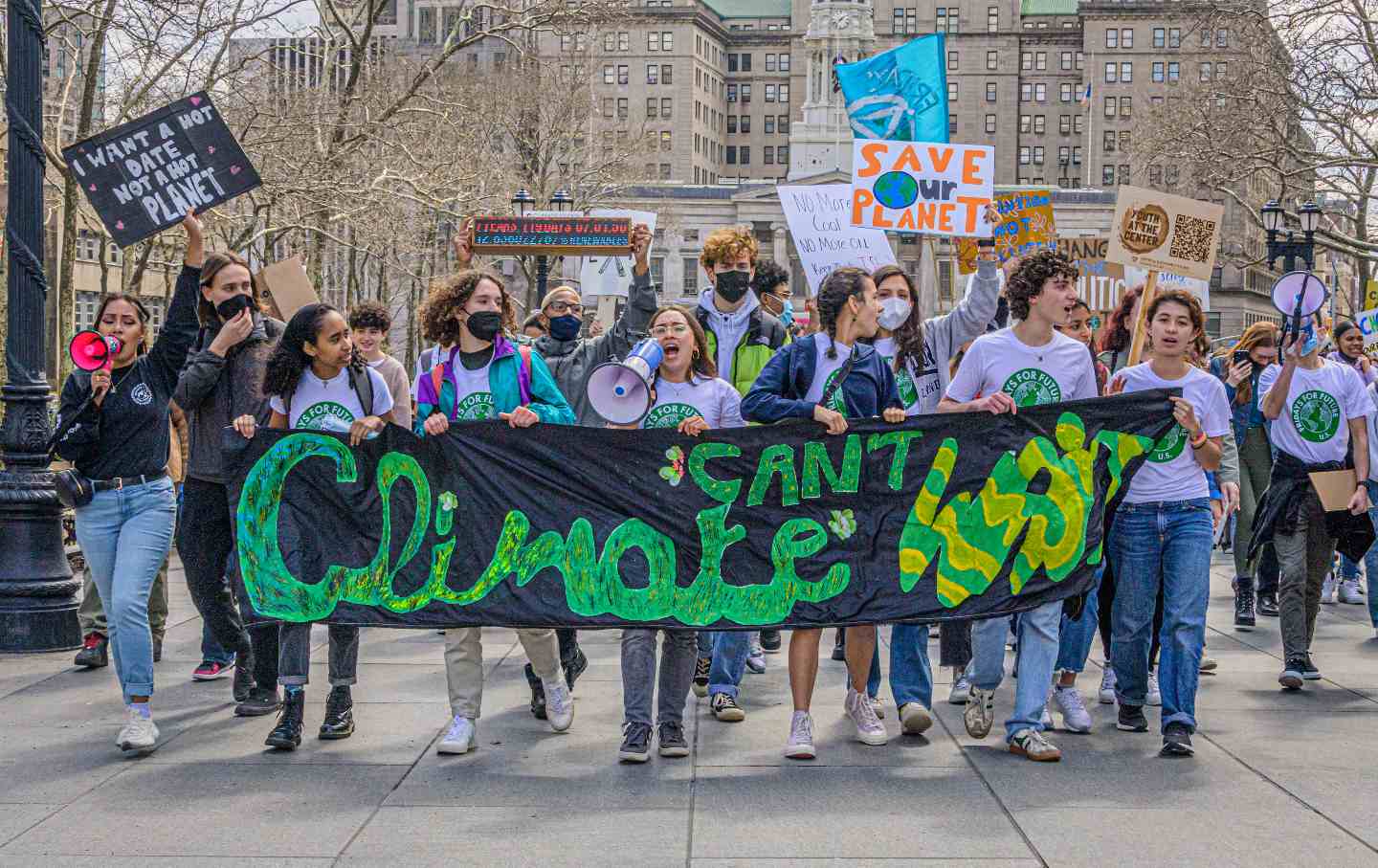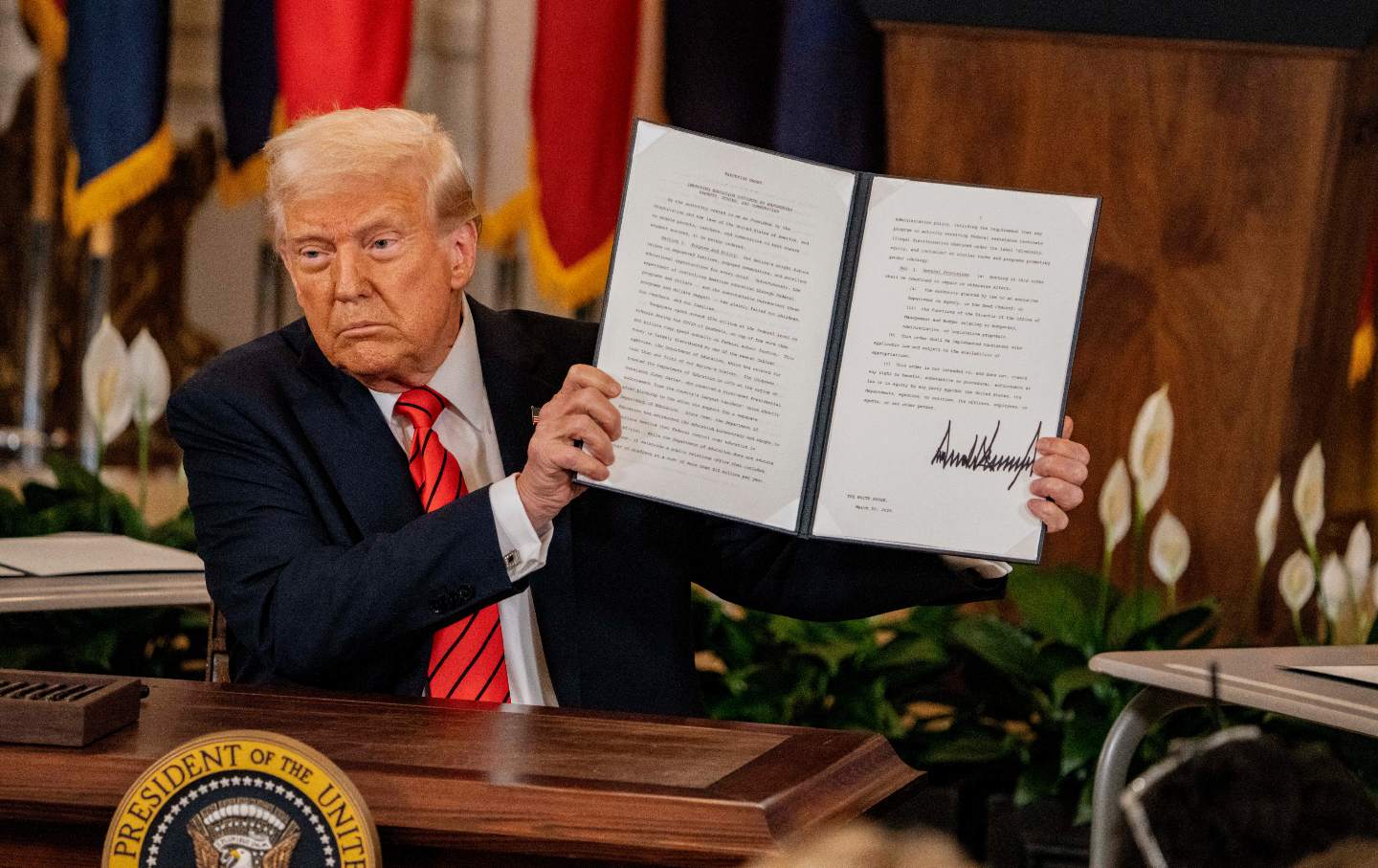It’s Time for the US to Declare a National Climate Emergency
The US has no comprehensive climate action plan with clear, enforceable targets, timelines, and road maps for climate protection and restabilization—and it desperately needs one.

This article originally appeared at TomDispatch.com. To stay on top of important articles like these, sign up to receive the latest updates from TomDispatch.com.
While April and May are usually the hottest months in many countries in Southeast Asia, hundreds of millions of people are now suffering in South Asia from an exceptionally intense heat wave that has killed hundreds. One expert has already called it the most extreme heat event in history. Record-breaking temperatures above 122º F were reported in the Indian capital of New Delhi and temperatures sizzled to an unheard of 127º F in parts of India and Pakistan.
Nor was the blazing heat limited to Asia. Heat waves of exceptional severity and duration are now occurring simultaneously in many areas of the world. Mexico and parts of the United States, notably Miami and Phoenix, have recently been in the grip of intense heat events. In southern Mexico, endangered howler monkeys in several states have been falling dead from trees in their tropical forests due to heat stroke and dehydration. Below-average rainfall throughout Mexico has led to water shortages in Mexico City and elsewhere. In some places, birds and bats, not to speak of humans, are also dying from the heat.
All of this is no coincidence. The hot and heavy hand of climate change is now upon us. Last year was the hottest on Earth in 125,000 years, and the concentration of heat-trapping carbon dioxide (CO2) in the atmosphere was the highest in 4 million years and is still climbing at an ever-increasing rate. Meanwhile, global sea surface temperatures also reached a peak, causing severe massive coral bleaching in all three major ocean basins.
The World Bank is projecting that by 2050 there will be more than 200 million climate refugees, 20 times the 10 million refugees that have already destabilized Europe. Climate change is also putting an increasingly heavy burden on our social safety net, which could ultimately cause social order to begin to break down, generating chaos.
Nobel Prize–winning former energy secretary Steven Chu now claims it’s no longer possible to keep the global temperature from rising more than 1.5° C above the historical average, as the 195-nation signatories to the 2015 Paris climate agreement had hoped. In fact, he projects that the target of 2° C will also be broken and that, by 2050 the global temperature will have risen above 3° C. Nor is his pessimism unique. Hundreds of other scientists have recently forecast a strong possibility of hitting 2.5° C, which should hardly be surprising since, for well over 30 years now, global leaders have failed to heed the warnings of climate scientists by moving decisively to phase out fossil fuels and their heat-trapping gases.
What to make of such dire forecasts?
It could hardly be clearer that the world is already in the throes of a climate catastrophe. That means it’s high time for the United States to declare a national climate emergency to help focus us all on the disaster at hand. (Or as famed English poet Samuel Johnson put it centuries ago, “When a man knows he is to be hanged in a fortnight, it concentrates his mind wonderfully.”)
Such a declaration of a climate emergency is long overdue. Some 40 other nations have already done so, including 2,356 jurisdictions and local governments representing more than a billion people. Of course, a declaration alone will hardly be enough. As the world’s wealthiest and most powerful nation, and the one that historically has contributed the most legacy greenhouse gases to the atmosphere, the US needs to develop a coherent exit strategy from the stranglehold of fossil fuels, a strategy that could serve as an international example of a swift and thorough clean-energy transition. But at the moment, of course, this country remains the world’s largest producer and consumer of oil and natural gas and the third-largest producer of coal—and should Donald Trump win in November, you can kiss any possible reductions in those figures goodbye for the foreseeable future. Sadly enough, however, though the Biden administration’s rhetoric of climate concern has been strong, in practice this country has continued to cede true climate leadership to others.
Despite the laudable examples of smaller nations like Iceland, Norway, Sweden, Paraguay, and Costa Rica that are already at, or within a percentage point or two, of being 100 percent powered by clean, renewable energy, the world sorely needs the United States as a global role model. To make a rapid, far-reaching, and unrelenting break with our fossil-fuel dependency—79 percent of the nation’s energy is now drawn from fossil fuels—a national mobilization would be needed, and it would have to be a genuine all-of-society effort.
National Mobilization Amid Crisis
Fortunately, there is a historical precedent for just such a comprehensive mobilization of government and citizenry in dire circumstances: President Franklin Delano Roosevelt’s New Deal in the 1930s and the World War II years provide examples of the scale and intensity of the response needed today to reverse climate change. However, instead of gearing up to produce jobs for the unemployed or planes and tanks for a war, a concerted nationwide industrial effort is needed now to upgrade our electrical grid and produce millions of solar panels, wind turbines, batteries, carbon-capture machines, and zero-emission vehicles. All too sadly, this country and the world are now in a situation even more perilous than either the Great Depression or World War II.
Rising seas pose serious threats to major American cities, including Boston, Charleston, Miami, and New York, while, in recent years, millions of acres of the Midwest have been flooded by climate-related extreme weather events. Had a foreign enemy inflicted the kind of damage caused by such floods, or the firestorms that swept California and the Pacific Northwest in 2020, or the hurricanes and droughts the nation has begun experiencing with increased frequency, the US would have immediately mobilized for war. Now, this country needs to do exactly that to face the climate crisis, but (even forgetting the horrifying possibility that Donald Trump could win the coming presidential election and sink any possibility of moving on climate change nationally for years to come) how to get our act together?
As French author Antoine de Saint-Exupéry wrote in his classic 1943 novella, Le Petit Prince, “A goal without a plan is just a wish.” In other words, a national climate action plan is urgently needed.
Popular
“swipe left below to view more authors”Swipe →In the Trump years of climate-science denial, any progress in controlling emissions resulted from actions by states, cities, and businesses or institutions. Over the long term, however, climate policy is far too important to be left to a hodgepodge of laws and policies haphazardly applied across some of our 50 states and thousands of cities and businesses. What this country needs is a plan guided by scientific and technical analysis and based on an ambitious but attainable set of greenhouse-gas-reduction quotas. Its point would not be to override the climate agendas of any city, state, or group, or the aspirations of the Green New Deal (House Resolution HR 109). It would simply be to provide a reliable toolkit of measures and policies along with analyses of their costs and benefits—a compass for getting to negative carbon emission as quickly and cost-effectively as possible.
This country today has no comprehensive climate action plan that proposes clear, enforceable targets, timelines, and road maps for climate protection and restabilization—and it desperately needs one. Call it America’s Energy Transition: Achieving a Clean Energy Future and imagine that it would build on previous authoritative studies, analyzing renewable-energy-generating and distribution technologies in terms of their costs, commercial readiness, resource constraints, and potential efficiency. It would formulate and model competing scenarios with clusters of complementary technologies, each requiring different policies for its implementation.
From such an exercise, Americans would learn how to achieve the greatest greenhouse gas reductions with the most speed and cost-effectiveness, as well as the fewest unwanted impacts, while best meeting this country’s ongoing energy needs. Such a study would also reveal the demands on natural resources of each scenario along with its costs and the manufacturing capacity required.
To build trust and engagement in the final plan, regional advisory councils made up of scientists, engineers, businesspeople, and major stakeholder representatives should be created to offer recommendations on how best to adapt such a plan to conditions in each part of the country. The final policy road map would then be designated as the “optimal energy path scenario” for the nation and provided to Congress, so that it could use the findings as a basis for funding and implementing new climate legislation.
Without Political Action, Don’t Hold Your Breath for a Bold Climate Plan
Left to its own devices, without strong public pressure, Congress might basically ignore or fail to enact legislation to implement the results of a National Climate Action Plan, especially if Congress were still controlled by the fossil-fuel-loving Republican Party. A Republican stranglehold on Congress and/or the White House would undoubtedly stymie both the creation of a national climate plan and the implementation of its findings, as well as the clean-energy transition it would facilitate.
To prevent such a setback from occurring, a strong popular constituency must be built nationwide capable of exerting powerful pressure on Congress to ensure the creation of a climate plan and the appropriate legislation to make it functional. Otherwise, no matter how sound the PR campaign on its behalf, serious political obstacles would stand in the way of its adoption, even by a Democratic Congress.
Through its lobbying, think tanks, public relations arms, and advertising, the politically and economically powerful fossil-fuel industry has, for decades, blocked meaningful climate legislation in both Democratic and Republican congresses. The creation of a powerful, broad coalition of constituencies—environmental, labor, public health, faith-based, and even progressive elements of the business community—could serve as a popular countervailing force against the mighty fossil-fuel industry. But as a first step, that coalition would need support, guidance, and a common accepted platform both to stand behind and to mobilize the public. The American environmental community could produce that platform. Yet this would not be a simple matter, due to the way that community is siloed, with each major organization catering to its own constituency, interests, and funders.
To create a common consensual vision around which the national climate movement could mobilize, a broad civil society gathering should be convened to attract the leadership of all environmental and climate action groups and set the stage for the National Climate Action Plan. That gathering would, of course, focus on the roadblocks to implementing such a plan and to a swift, national clean-energy transition—and how those roadblocks could be dismantled.
Put all of this together and you would have a nation mobilized against the fossil fuel industry, ready to create a climate action plan and mobilize Americans in an all-of-society effort on behalf of slashing national carbon emissions in a radical fashion, accelerating a clean-energy transition, and protecting our endangered world. What more could you ask for?








